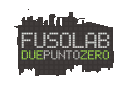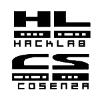WikiWiki in hawaiano significa "veloce".
Un NomeWiki è una parola composta da due o più parole, con l'iniziale di ogni parola maiuscola.
Usa sempre la forma singolare per un NomeWiki, altrimenti si potrebbero creare più pagine per lo stesso argomento.
- Sii coraggioso quando aggiorni le pagine, i backup delle vecchie versioni vengono creati automaticamente.
Impostando un segnalibro in ModificheRecenti puoi possibile verificare le modifiche fatte dalla tua ultima visita.
CategoriaCategoria presenta una panoramica di tutte le categorie disponibili.
Fai clic su PreferenzeUtente per creare un account e per attivare altre funzioni.
- Facendo clic sul titolo della pagina, si ottiene un elenco delle pagine che attualmente puntano a quella.
- Non creare una nuova e corta pagina per un sotto-argomento quando può essere contenuto in una pagina esistente.
Per il nome del tuo account dovresti usare un NomeWiki (NomeCognome).
Nelle PreferenzeUtente è possibile utilizzare i propri CSS per modificare la visualizzazione predefinita.
Basta semplicemente digitare un URL (http://www.example.net) e il wiki lo trasforma automaticamente in un collegamento.
In PreferenzeUtente è possibile modificare l'elenco dei collegamenti rapidi.
In PreferenzeUtente è possibile usare espressioni regolari per abbonarsi alle pagine. Con ".*" ti abboni a tutte le pagine.
PagineOrfane mostra le pagina non collegate da un NomeWiki.
Imposta la Lingua nelle preferenze del tuo browser web o in PreferenzeUtente a italiano per avere i menù del wiki e i messaggi in italiano.
Impostando la Lingua a italiano in PreferenzeUtente, ti consentirà di ricevere le email dal wiki in italiano.
L'uso delle categorie aiuta nell'organizzazione delle informazioni.
Usa NomiWiki al posto di URL quando devi creare un collegamento a una pagina all'interno del wiki.
PagineAssenti mostra i NomiWiki che attualmente non sono una pagina wiki.
Quando scrivi il tuo indirizzo email, usa <<MailTo(Nome DOT Cognome AT example DOT net)>> per evitare spam.
I wiki sono fighi, specialmente se hai letto le pagine di aiuto (vedi AiutoContenuti).

Con {{attachment:miofile.png}} puoi creare un collegamento a un allegato (e usare tale collegamento per caricare l'allegato).
Con "@SIG@" puoi apporre la tua firma.
Con "Aggiungi collegamento" puoi aggiungere la pagina attuale all'elenco dei collegamenti rapidi.
Con "Controllo ortografico" puoi eseguire un controllo ortografico. Aggiungi le parole solo se sono scritte correttamente.
Con "Commenti" puoi attivare/disattivare la visualizzazione dei commenti nella pagina attuale.
Con "Informazioni" puoi guardare alla cronologia delle revisioni della pagina attuale.
Con "Abbonati" puoi essere tenuto informato via email riguardo i cambiamenti alla pagina attuale.
Puoi fare in modo che un NomeWiki non diventi un collegamento, inserendo un ! prima della parola.
Puoi modificare la dimensione predefinita della finestra dell'editor nelle PreferenzeUtente.
Puoi creare o modificare l'elenco dei collegamenti rapidi nelle PreferenzeUtente.
Puoi usare altre pagine al posto della PaginaPrincipale come punto di partenza, per esempio ModificheRecenti o la tua pagina personale.
- Puoi usare caratteri non-ASCII (come äæéłöŧüñ) nelle pagine e anche nei nomi delle pagine.








